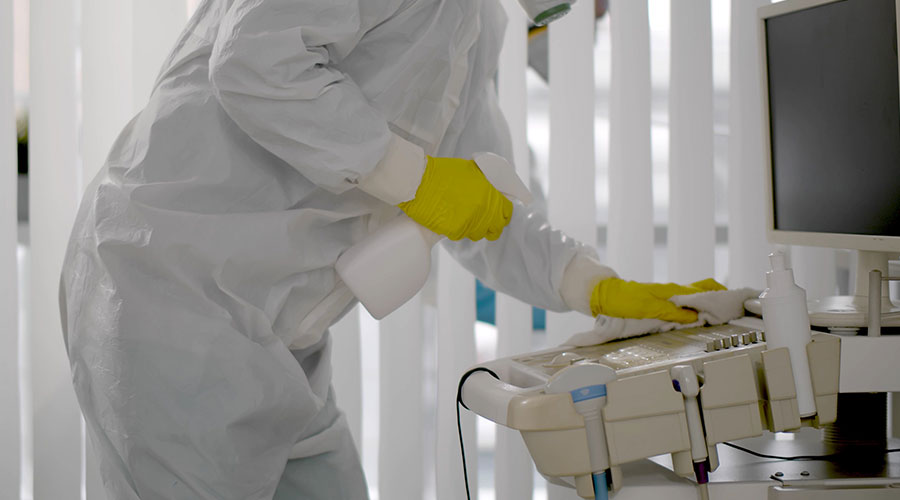Cleaning has never been investigated as a focused scientific entity. That is why cleanology — the study of cleaning — is essential.
“People don’t buy what you do,” says Simon Sinek, a motivational speaker. “They buy why you do it. And what you do simply proves what you believe.”
What do environmental services (EVS) managers believe about the importance of cleaning in their hospitals?
It is impossible to determine just how important cleaning might be in overall infection control. Finding the evidence to support cleaning as a significant factor in preventing infection has been seriously discounted because there are no accepted risk-based standards to verify whether a hospital is truly clean and safe.
Traditional detergent-based cleaning should receive a full and thorough investigation. Surprisingly, this has not happened. It is possible that increasing the frequency of established high touch and high-risk sites could be a crucial factor in reducing infection risk rather than a toxic or corrosive alternative.
Washing or scrubbing a surface physically removes soil and organic material, such as blood and body fluids, and it takes many if not most germs with it. The guiding principle is always to remove germs, if possible, rather than kill them. For too long, we have sprayed disinfectants on near-patient surfaces without removing the soil first.
Related: Needed: New Framework for Environmental Services Workers
In the absence of direct evidence, it is difficult to identify the cause of inadequate cleaning. Among the possibilities:
- the wide range of surfaces needing cleaning or disinfection
- the lack of education and easily understood training for housekeepers whose first language is not English
- the method of applying cleaners and disinfectants — spray bottle vs. bucket; mop and bucket vs. microfiber mop
- not enough time allowed for thorough cleaning
- cleaners using the wrong tools — cotton rags vs. microfiber
- no formal program for testing cleaning efficacy
- a failure of process, such as a flawed cleaning protocol
- a failure to follow process, meaning the process being poorly performed
- ambiguity over who cleans what in patient rooms
- poorly designed or ineffective checklists
- cluttered patient rooms that impede cleaning.
Cleaning patient rooms is more efficient when workers follow a set pattern, whether it is cleaning from top to bottom or clockwise rather than using their own pattern. EVS workers also must deal with interruptions, which increases the worker’s required time to clean.
Next-patient-room cross-transmission provides evidence of inadequate decontamination, including disinfection. But this phenomenon was identified when the prior occupant was known to be colonized or infected. This could be a failure of the wrong disinfectant, failure of process or any one of the other reasons mentioned earlier.
An EVS department’s role is to clean the hospital to the point that it protects human health in general. A risk of disease still exists, but it is at an acceptable level. At a minimum, cleaning must always achieve a state of sanitation. An unsanitary condition poses a likely health risk.
The purpose of cleaning is to correct risky conditions. So, if a risk has not been improved to a sanitary level, cleaning has not been accomplished.
J. Darrel Hicks, BA, MESRE, CHESP, Certificate of Mastery in Infection Prevention, is the past president of the Healthcare Surfaces Institute. Hicks is nationally recognized as a subject matter expert in infection prevention and control as it relates to cleaning. He is the owner and principal of Safe, Clean and Disinfected. His enterprise specializes in B2B consulting, webinar presentations, seminars and facility consulting services related to cleaning and disinfection. He can be reached at darrel@darrelhicks.com, or learn more at www.darrelhicks.com.

 Grounding Healthcare Spaces in Hospitality Principles
Grounding Healthcare Spaces in Hospitality Principles UC Davis Health Selects Rudolph and Sletten for Central Utility Plant Expansion
UC Davis Health Selects Rudolph and Sletten for Central Utility Plant Expansion Cape Cod Healthcare Opens Upper 2 Floors of Edwin Barbey Patient Care Pavilion
Cape Cod Healthcare Opens Upper 2 Floors of Edwin Barbey Patient Care Pavilion Building Sustainable Healthcare for an Aging Population
Building Sustainable Healthcare for an Aging Population Froedtert ThedaCare Announces Opening of ThedaCare Medical Center-Oshkosh
Froedtert ThedaCare Announces Opening of ThedaCare Medical Center-Oshkosh